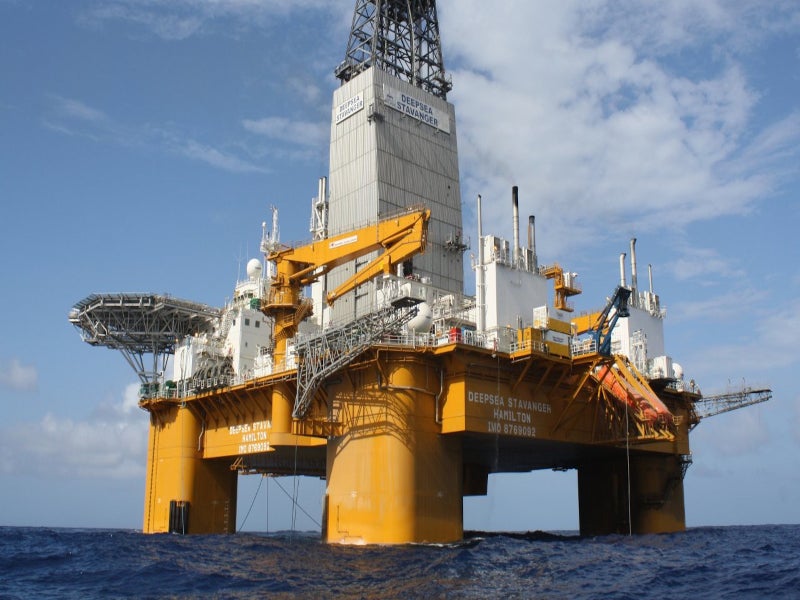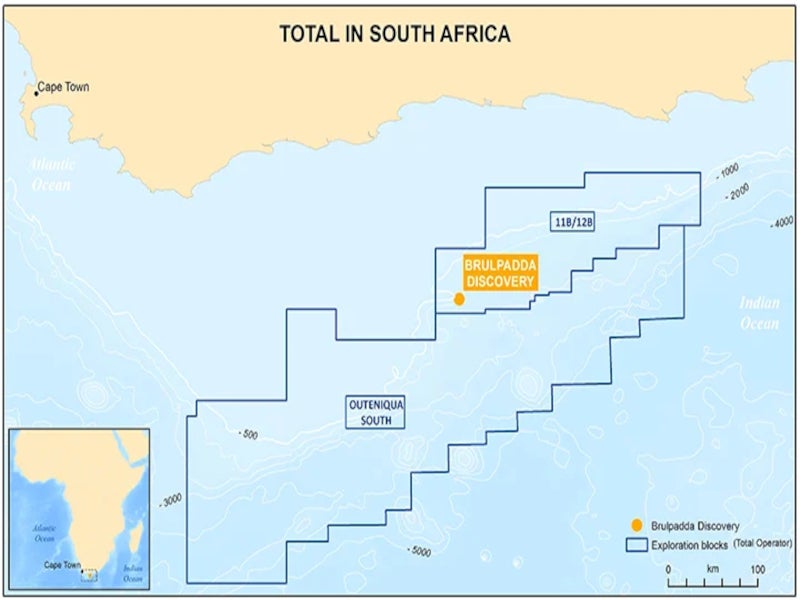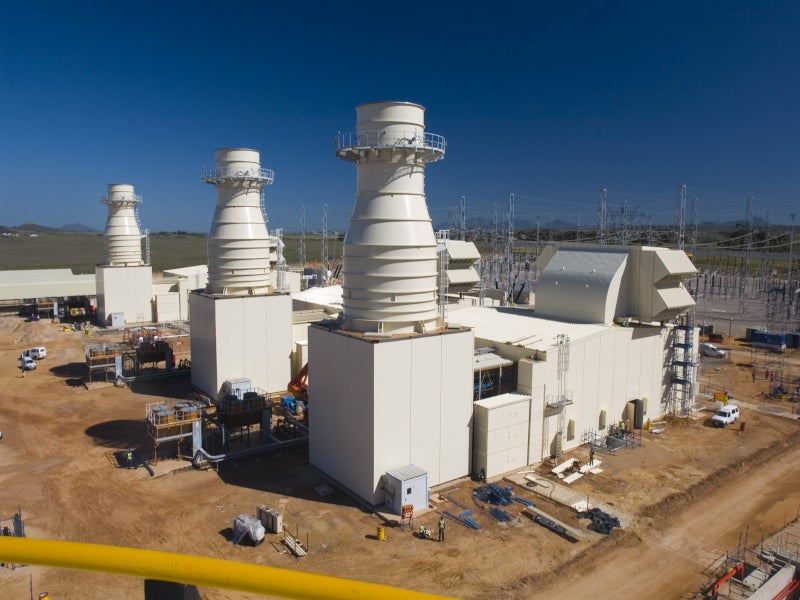The Luiperd-Brulpadda project involves the development of the Luiperd and Brulpadda gas condensate fields located on Block 11B/12B in the Outeniqua Basin, 175km offshore the southern coast of South Africa.
Spanning 19,000km2, Block 11B/12B lies at water depths ranging between 200m and 1,800m.
TotalEnergies operates the block with a working interest of 45%, while the remaining interest is held by Qatar Petroleum (25%), Canadian Natural Resources (CNR, 20%) and Main Street (10%), a South African consortium owned by Arostyle Investments (51%) and Africa Energy (49%).
The production right application for the project development is expected to be submitted by September 2022 and the final investment decision (FID) is targeted for 2023. First gas from the project is expected to be produced by the end of 2025.
Location and reserves
The Luiperd and Brulpadda fields are situated within the Paddavissie Fairway, a hydrocarbon-rich area located in the southwest corner of Block 11B/12B.
Luiperd is estimated to contain 2.1 trillion cubic feet (tcf) of gas and 112 million barrels of condensate, while Brulpadda is estimated to hold 1.3tcf and 80 million barrels of gas and condensate, respectively.
Brulpadda gas field discovery
The Brulpadda field was discovered with a large volume of gas condensate in February 2019. The Deepsea Stavanger semi-submersible rig drilled the Brulpadda-1AX discovery well in approximately 1,400m of water in a deep marine fan sandstone system situated in combined stratigraphic or structural closure. The well encountered a net gas condensate pay of 57m in high-quality Middle to Lower Cretaceous reservoirs.
The well was further drilled to a total depth of 3,633m and confirmed the Brulpadda-deep prospect.
TotalEnergies acquired 570km2 of 3D seismic data with the Polarcus Asima research vessel from the Brulpadda and Luiperd fields in March and April 2019.
Luiperd gas field discovery
The Luiperd-1X discovery well was spud to a total depth of about 3,400m with the Deepsea Stavanger rig in 1,800m of water in August 2020.
The well encountered 73m of net gas condensate pay in well-developed good quality Lower Cretaceous reservoirs.
Both the Luiperd and Brulpadda gas fields proved the presence of a significant amount of new petroleum systems in the region.
Luiperd-Brulpadda project development details
The project will be developed in a phased manner. The first phase will involve the drilling of at least three gas-producing wells at the Luiperd field. The wells will be developed through an early production system and connected to the existing F-A gas production platform operated by state-owned oil company PetroSA.
The gas produced from the field will be supplied to PetroSA’s gas-to-liquid (GTL) refinery at Mossel Bay for processing.
The second phase of development will include the drilling of up to 17 wells and the construction of an additional gas production facility that will process more than twice the gas and condensate volumes processed by the existing F-A platform.
The fields will be developed by installing a subsea production system, including a pipeline end termination (PLET) and manifold as well as subsea umbilicals, risers and flowlines (SURF) and pipelines.
Contractors involved
Odfjell Drilling’s Deepsea Stavanger rig was used to drill the discovery wells as part of its multi-year exploratory contract of the Outeniqua Basin with Total.
Benefits of Luiperd-Brulpadda project
South Africa’s indigenous source of natural gas was developed in the 1980s and the Mossgas facility was constructed to beneficiate the gas. The additional requirement of natural gas is currently fulfilled by importing from Mozambique.
The Luiperd-Brulpadda project will reduce South Africa’s reliance on gas imports and serve as an alternative to coal-dominated energy generation. The feedstock from the project will be supplied to PetroSA’s GTL refinery. The refinery is one of the primary revenue generators for PetroSA but has struggled to source the natural gas required to continue its operations and is dependent on expensive condensate imports.
The Luiperd-Brulpadda project will help the refinery in continuing its operations and preventing shutdown. The gas from the project will also be transferred to the state-owned electricity utility Eskom’s 740MW Gourikwa oil-fired power plant through a 90km-long pipeline for power generation, apart from being used in the petrochemicals manufacturing industry.
The discoveries will support in attracting not only new oil and gas companies to the South African oil and gas industry but also investors.






